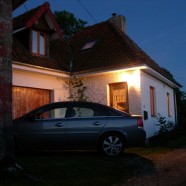
Here in south Florida, hurricanes, tropical storms, and wild thunder and lightning are common occurrences. Along with putting away the lawn furniture and tying the tree limbs, we’ve also got to be ready for the inevitable loss of power that happens multiple times a year. Some power outages are short term situations, only lasting an hour or two. But with the worst of storms, the power can stay off for days at a time while workers try to get the infrastructure back in shape.
If the storm is bad enough, you may opt for taking yourself and your family out of the area, closing up your house in the meantime. But if you plan to stay, or if you’re taking unawares, you may be stuck for a long time with no electricity to run your appliances. This can cause a real problem, and end up costing you a lot of money for lost food, along with the inconvenience and uncomfortable living. This is where a generator begins to make sense.
Your Minimum Needs
You may never think about everything in your life that electricity powers until you lose it. It would not be cost-effective to get a generator that can run everything in your household, but there are a few items that are crucial to keep going.
- Refrigerator
- Several lights
- Sump pump
- Microwave
- Television
What Size Generator Do I Need?
The size of your generator completely depends on how much power you want, and what you feel is the minimum for living during a power outage. If you can get by on just the bare basics, a smaller model will do. If your life won’t be complete without a computer and central air conditioning, you’ll need a more serious machine.
A small portable machine of 3,000 to 4,000 watts will run the basics on an average house. This includes the absolute bare minimum to get by during an outage.
A mid-sized portable machine with 5,000 to 8,500, can make your life a little easier. It can add a computer, a portable heater, a second sump pump, or more lights to the mix.
Move up to a large portable of around 10,000 watts and you’ll be able to run a small water heater, air conditioning, and an electric stove.
The largest generators available for home use are permanent installations of 10,000 to 15,000 watts. As long as they have fuel in them, they will basically run your entire house without a break in your service, just as if the rest of the neighborhood weren’t out of power.
How to Choose
The size of generator you need depends on quite a few factors. Do you have elderly people, infants, or those who are ill living in your home? You may need to keep the air conditioning on no matter what, requiring a more powerful piece of equipment. Is your family filled with rugged individualists and small children who will think camping out in the living room is an adventure? The smallest possible generator that just powers the refrigerator to keep your food safe might do the job.
Money is also something to consider, as each type of generator costs more than the smaller version before it. Don’t make money the only issue, though, since you may get a discount on your insurance if you have a generator, plus you’ll save money by not losing pounds of food during an outage.
Finally, before you think about installing a permanent generator, speak with an electrical contractor to find out how much home rewiring you’ll need to install. It may be a simple job, or you entire home may need to be redone for some of the more powerful systems. It’s a compromise between what you want and what you absolutely need, but getting some type of generator in south Florida is always a good idea.

Recent Comments